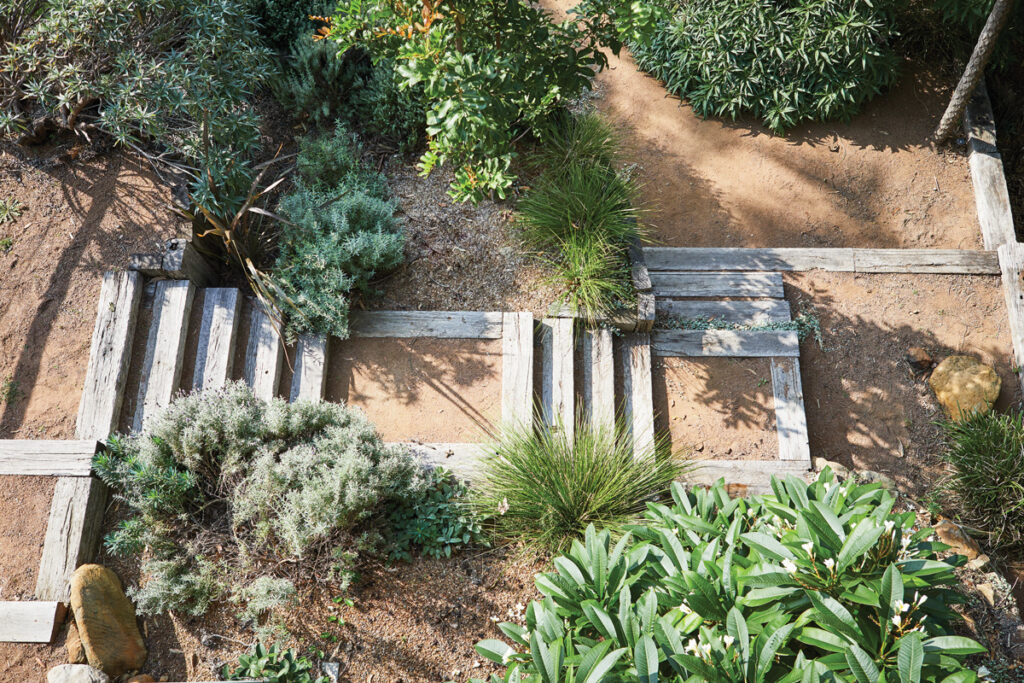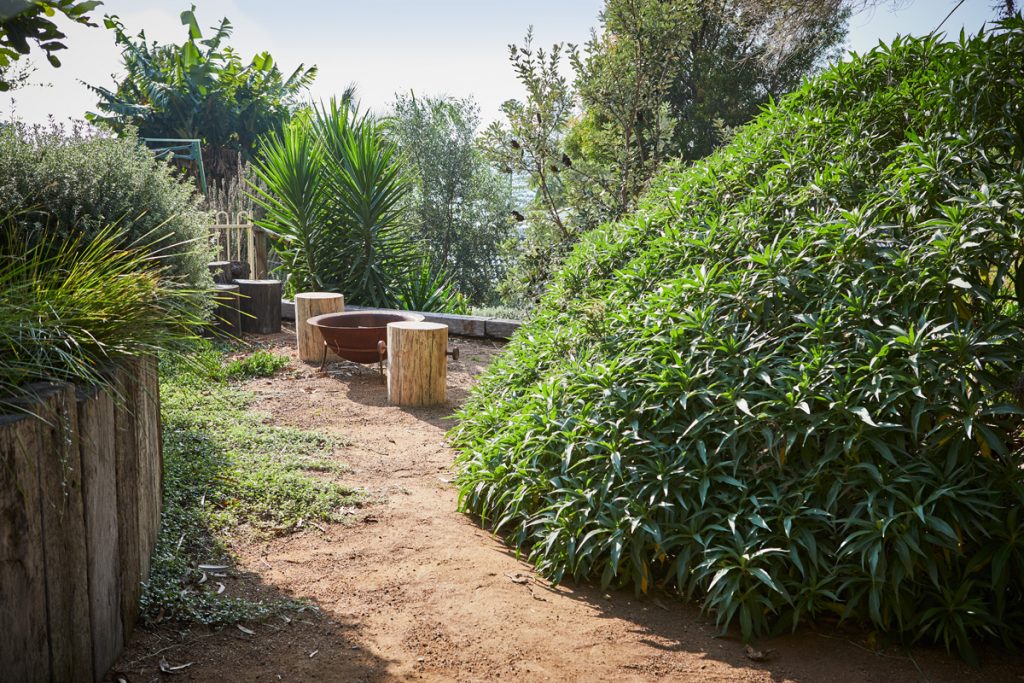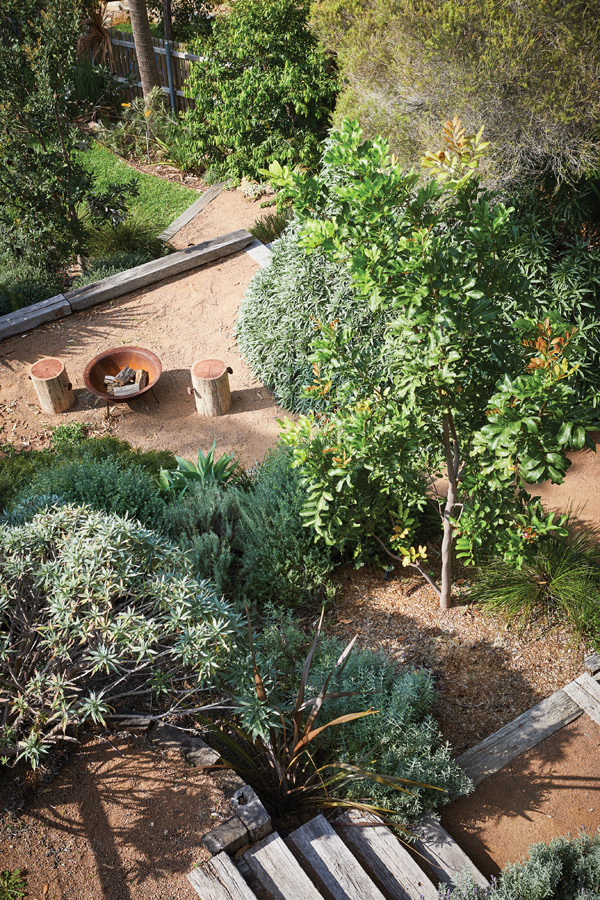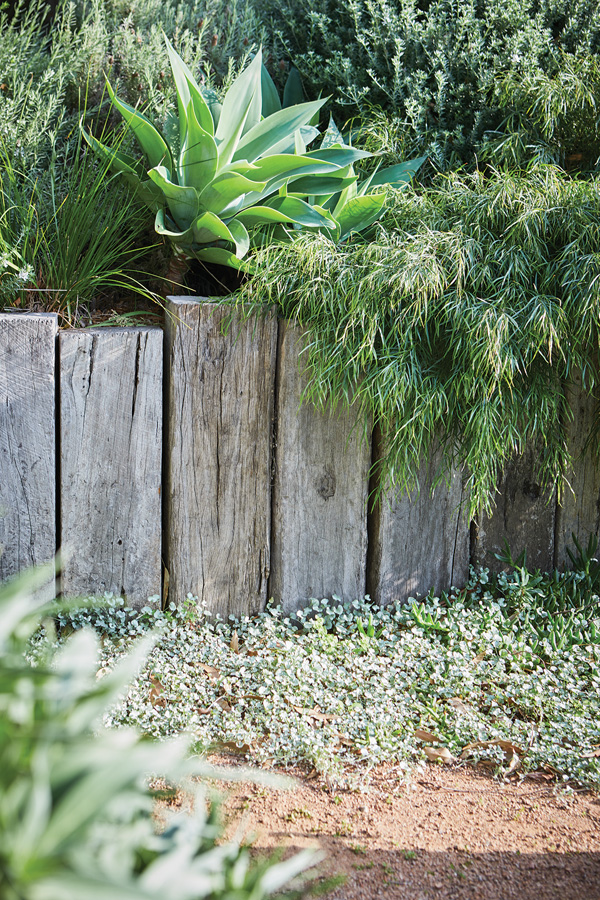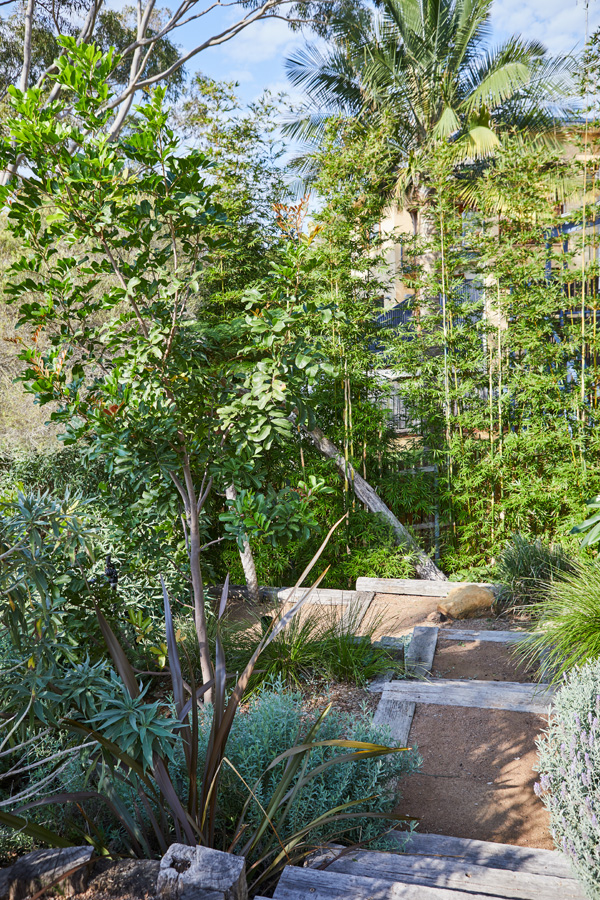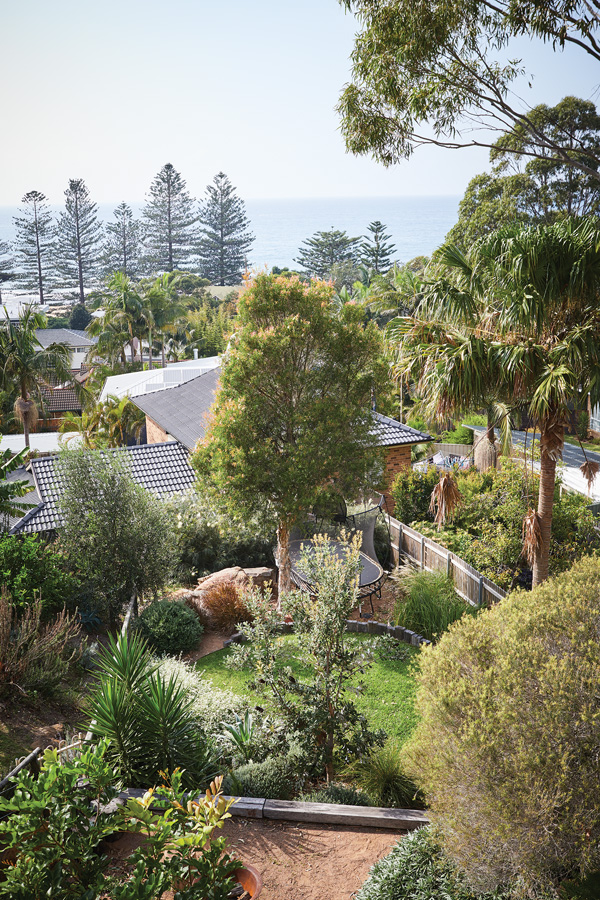Survive and Thrive
The harsh conditions of a family’s coastal property and their self-confessed plant-killing tendencies culminate in a hard-wearing, unpretentious and welcoming garden.
Four years ago Ann Woods, her husband and their two young sons opted for a sea change. They left behind the crowded inner-city suburbs of Sydney and headed south, to a house perched on the flank of the Illawarra escarpment, just north of Wollongong, with views across a Norfolk pine fringed beach to the ocean.
The house – a 1980s, mottled brick, two-storey building, on a steeply sloping and irregularly shaped block that faces east – was easily transformed with render and paint. But the owners needed help with the large (by city standards) 800-square-metre garden. Enter Grant Boyle from Fig Landscapes. “The block is elevated and just 500 metres from the beach, so it’s exposed to strong winds and salt,” says Grant. “As the owners are self-confessed ‘plant killers’ I needed to create a garden that would thrive for them in the harsh conditions.”
The soil was also poor, with pockets of coal-wash, from a disused underground coal mine nearby, used as fill. But the site did come with some hard and soft landscaping assets: several large, sculptural boulders and a handful of established trees, including a cabbage-tree palm (Livistona australis), which may be a remnant indigenous tree; a lemon-scented teatree (Leptospermum petersonii); a coin spot tree fern (Cyathea cooperi); a paper bark (Melaleuca quinquenervia); and a frangipani (Plumeria acutifolia). Blanketing the rest of the sloping rear yard was lawn.
“The clients wanted a low-maintenance garden with a usable, level space,” says Grant. “There had to be an area for a fire pit and a lawn for the kids. Other than that they were open to my ideas and interpretation of the site. The garden also had to look interesting from above, as there is a large entertaining deck that overlooks the garden.”
Construction took six weeks, with the main challenge being access. The established trees were too large to transplant, so Grant incorporated them into his plan. However, the rocks could be moved with an excavator, which was also used to cut and fill the site to create terraced beds and a level lawn area. New soil was brought in to boost what was there, and a thick layer of mulch was added to help improve the soil’s structure and organic content as it breaks down.
The finished rear garden is now divided into three distinct areas, linked with meandering gravel paths of decomposed granite, edged with greying timber railway sleepers. Steps bordered with plants lead from the house down to the first terrace, which is home to the fire pit. From there, more steps descend to the requested, circular patch of lawn. At the lower end of the garden lie several of the boulders – as if they have tumbled down the hill – plus a trampoline. Screening the rear boundary fence are several tousled grevilleas (G. ‘Moonlight’).
This is not a neat, manicured garden. Plants blur the edges, tumbling over palisade walls of weathering timber sleepers, and creeping out across the decomposed granite paths. The palette is a mix of native and exotic species, with many grey-leafed plants that complement the silvering timber. There’s plenty of texture too, with spiky succulents interplanted with nodding grasses, woody perennials, small-leaved shrubs and a few smaller-sized trees.
“I wanted to work with the harsh coastal site constraints rather than against them, and the plants were chosen for their ability to thrive there,” says Grant. “There is no irrigation on site, so the plants have to be able to survive on rainfall alone. It was also important that the garden was really hard-wearing, and that it became more grounded in its coastal surroundings as it aged and weathered.”
While still relative newcomers to the area, the family has found that their house has become a hub for their sons’ friends, who gravitate to the garden, fulfilling one of Grant’s aims that the boys engage with the space. He also wanted a garden filled with plants to balance the hard landscaping elements.
“This was the first project I designed and built when I started my own company, so it’s a joy to see the planting mature and my vision come to life,” says Grant, who worked in the industry for a decade before starting Fig Landscapes in 2015. “I love the natural, unpretentious feel of the garden – and it’s a space that actually feels like a garden! So much of what landscapers do these days is ‘hardscapes’, so it’s refreshing to create a garden space.”
